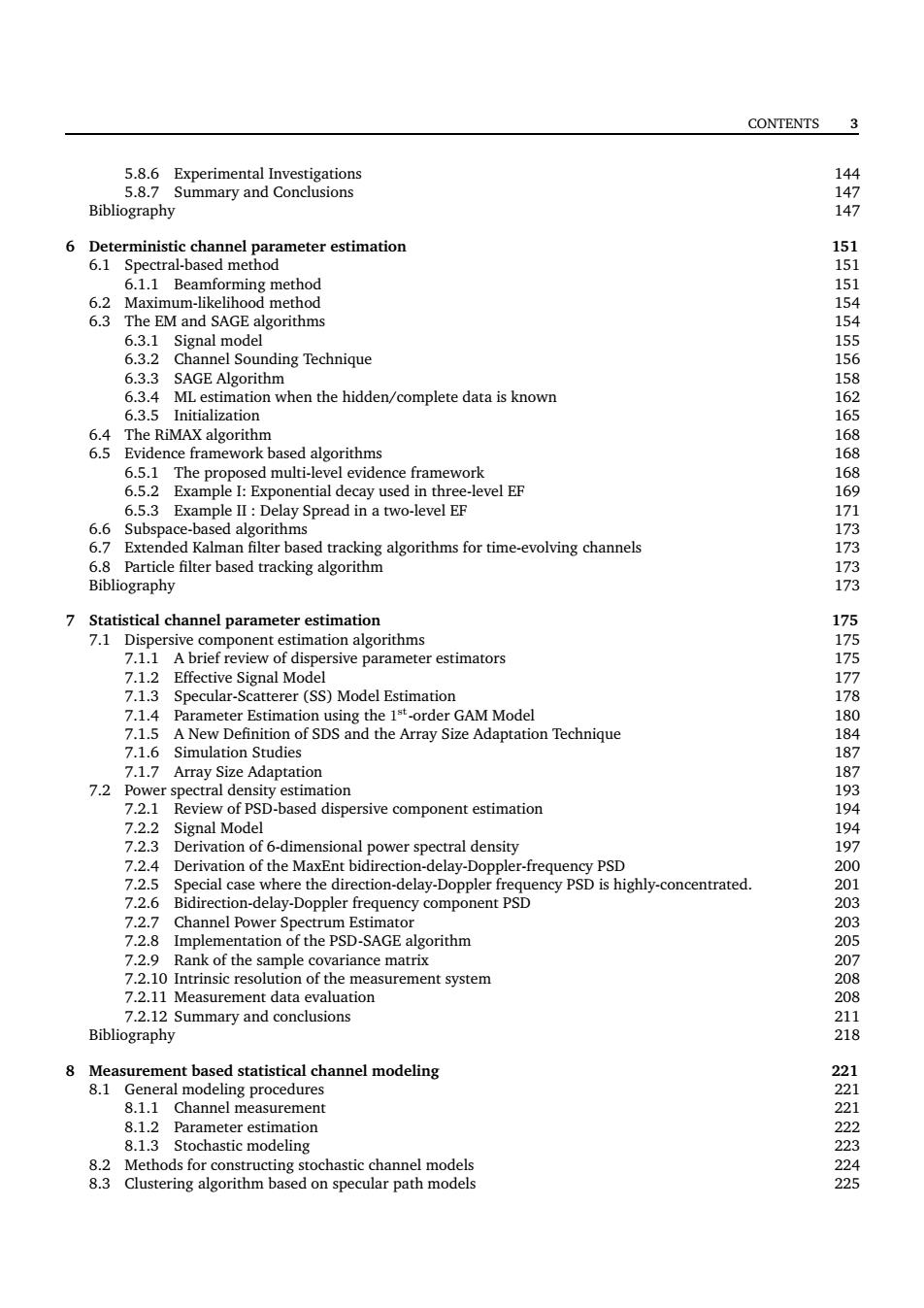正在加载图片...

CONTENTS 3 14 Bibliography 6 th 6.2 Maximum-likelhood method 5555 6.3 555 6365Ema on when the hidden/complete data is known 6.5.2 elay Spread in a two-level EF SCage 69 6的iogpherbaseduacinggorithn 7 Statistical channel parameter esti 7.1 er estimators 7.12 Effective Signal Model erer (SS) 71.7 Simula 7704009 7.2 Po Revie of el 72.3 Derivation of 6-dimensional power spectral density 7.2.4 etraienofheaatbdieci -delay-D Bidirection-delay-Do frequen 加00 72.7 Channel Power Spectrum Estin ato tion of the PSD SAGE gorithm 720 7.2.10 Intrinsic resolution of the measurement system Measurement data evaluation 00000 Bblogap Summary an Mea nt based statistical channel modeling 8.1 General modeling procedures 812 Channel measureme 8.1.3 Stochastic modeling 2 CONTENTS 3 5.8.6 Experimental Investigations 144 5.8.7 Summary and Conclusions 147 Bibliography 147 6 Deterministic channel parameter estimation 151 6.1 Spectral-based method 151 6.1.1 Beamforming method 151 6.2 Maximum-likelihood method 154 6.3 The EM and SAGE algorithms 154 6.3.1 Signal model 155 6.3.2 Channel Sounding Technique 156 6.3.3 SAGE Algorithm 158 6.3.4 ML estimation when the hidden/complete data is known 162 6.3.5 Initialization 165 6.4 The RiMAX algorithm 168 6.5 Evidence framework based algorithms 168 6.5.1 The proposed multi-level evidence framework 168 6.5.2 Example I: Exponential decay used in three-level EF 169 6.5.3 Example II : Delay Spread in a two-level EF 171 6.6 Subspace-based algorithms 173 6.7 Extended Kalman filter based tracking algorithms for time-evolving channels 173 6.8 Particle filter based tracking algorithm 173 Bibliography 173 7 Statistical channel parameter estimation 175 7.1 Dispersive component estimation algorithms 175 7.1.1 A brief review of dispersive parameter estimators 175 7.1.2 Effective Signal Model 177 7.1.3 Specular-Scatterer (SS) Model Estimation 178 7.1.4 Parameter Estimation using the 1 st-order GAM Model 180 7.1.5 A New Definition of SDS and the Array Size Adaptation Technique 184 7.1.6 Simulation Studies 187 7.1.7 Array Size Adaptation 187 7.2 Power spectral density estimation 193 7.2.1 Review of PSD-based dispersive component estimation 194 7.2.2 Signal Model 194 7.2.3 Derivation of 6-dimensional power spectral density 197 7.2.4 Derivation of the MaxEnt bidirection-delay-Doppler-frequency PSD 200 7.2.5 Special case where the direction-delay-Doppler frequency PSD is highly-concentrated. 201 7.2.6 Bidirection-delay-Doppler frequency component PSD 203 7.2.7 Channel Power Spectrum Estimator 203 7.2.8 Implementation of the PSD-SAGE algorithm 205 7.2.9 Rank of the sample covariance matrix 207 7.2.10 Intrinsic resolution of the measurement system 208 7.2.11 Measurement data evaluation 208 7.2.12 Summary and conclusions 211 Bibliography 218 8 Measurement based statistical channel modeling 221 8.1 General modeling procedures 221 8.1.1 Channel measurement 221 8.1.2 Parameter estimation 222 8.1.3 Stochastic modeling 223 8.2 Methods for constructing stochastic channel models 224 8.3 Clustering algorithm based on specular path models 225